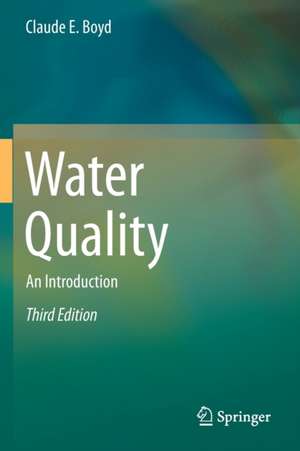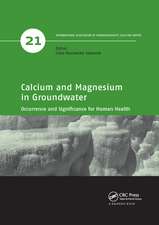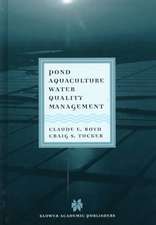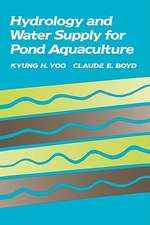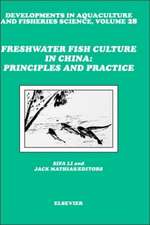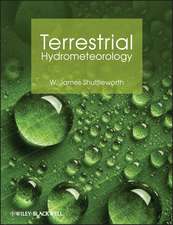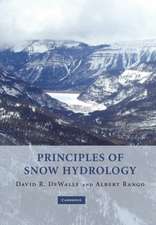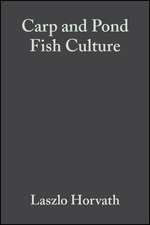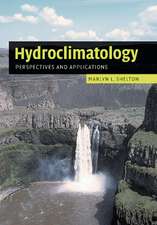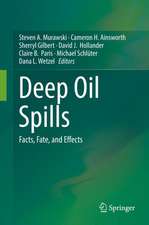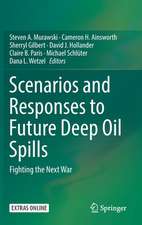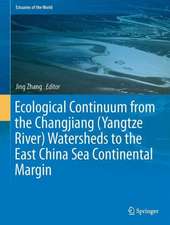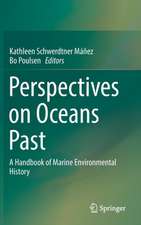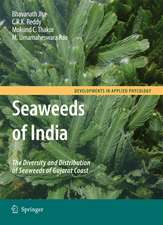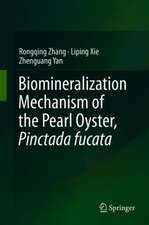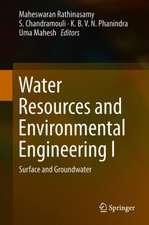Water Quality: An Introduction
Autor Claude E. Boyden Limba Engleză Paperback – 25 sep 2020
University training in water quality is often limited to specialized courses in engineering, ecology, and fisheries curricula. This book also offers a basic understanding of water quality to professionals who are not formally trained in the subject.
The revised third edition updates and expands the discussion, and incorporates additional figures and illustrative problems. Improvements include a new chapter on basic chemistry, a more comprehensive chapter on hydrology, and an updated chapter on regulations and standards.
Because it employs only first-year college-level chemistry and very basic physics, the book is well-suited as the foundation for a general introductory course in water quality. It is equally useful as a guide for self-study and an in-depth resource for general readers.
| Toate formatele și edițiile | Preț | Express |
|---|---|---|
| Paperback (2) | 463.56 lei 6-8 săpt. | |
| Springer International Publishing – 25 sep 2020 | 463.56 lei 6-8 săpt. | |
| Springer International Publishing – 29 oct 2016 | 503.37 lei 6-8 săpt. | |
| Hardback (2) | 597.99 lei 6-8 săpt. | |
| Springer International Publishing – 25 sep 2019 | 597.99 lei 6-8 săpt. | |
| Springer Us – 30 iun 2000 | 952.89 lei 6-8 săpt. |
Preț: 463.56 lei
Nou
Puncte Express: 695
Preț estimativ în valută:
88.70€ • 92.62$ • 73.25£
88.70€ • 92.62$ • 73.25£
Carte tipărită la comandă
Livrare economică 15-29 aprilie
Preluare comenzi: 021 569.72.76
Specificații
ISBN-13: 9783030233372
ISBN-10: 3030233375
Pagini: 440
Ilustrații: XI, 440 p. 115 illus., 6 illus. in color.
Dimensiuni: 155 x 235 x 32 mm
Greutate: 0.63 kg
Ediția:3rd ed. 2020
Editura: Springer International Publishing
Colecția Springer
Locul publicării:Cham, Switzerland
ISBN-10: 3030233375
Pagini: 440
Ilustrații: XI, 440 p. 115 illus., 6 illus. in color.
Dimensiuni: 155 x 235 x 32 mm
Greutate: 0.63 kg
Ediția:3rd ed. 2020
Editura: Springer International Publishing
Colecția Springer
Locul publicării:Cham, Switzerland
Cuprins
Introduction.- 1.Physical Properties of Water.- 2.An Overview of Hydrology.- 3.Water Temperature.- 4.Dissolved Solids.- 5.Particulate Matter, Color, Turbidity, and Light.- 6.Dissolved Oxygen and Other Gases.- 7.Redox Potential.- 8.pH, Carbon Dioxide, and Alkalinity.- 9.Acidity.- 10.Total Hardness.- 11.Microorganisms, Macrophytes, and Water Quality.- 12.Nitrogen.- 13.Phosphorus.- 14.Eutrophication.- 15.Sulfur.- 16.Micronutrients and Other Trace Elements.- 17.Water Supply.- 18.Water Pollution.- 19.Water Quality Regulations.
Notă biografică
Claude E. Boyd
Auburn University
School of Fisheries, Aquaculture and Aquatic Science
Auburn, AL
USA
Auburn University
School of Fisheries, Aquaculture and Aquatic Science
Auburn, AL
USA
Textul de pe ultima copertă
This volume is of great importance to humans and other living organisms. The study of water quality draws information from a variety of disciplines including chemistry, biology, mathematics, physics, engineering, and resource management.
University training in water quality is often limited to specialized courses in engineering, ecology, and fisheries curricula. This book also offers a basic understanding of water quality to professionals who are not formally trained in the subject.
The revised third edition updates and expands the discussion, and incorporates additional figures and illustrative problems. Improvements include a new chapter on basic chemistry, a more comprehensive chapter on hydrology, and an updated chapter on regulations and standards.
Because it employs only first-year college-level chemistry and very basic physics, the book is well-suited as the foundation for a general introductory course in water quality. It is equally useful as a guide for self-study and an in-depth resource for general readers.
University training in water quality is often limited to specialized courses in engineering, ecology, and fisheries curricula. This book also offers a basic understanding of water quality to professionals who are not formally trained in the subject.
The revised third edition updates and expands the discussion, and incorporates additional figures and illustrative problems. Improvements include a new chapter on basic chemistry, a more comprehensive chapter on hydrology, and an updated chapter on regulations and standards.
Because it employs only first-year college-level chemistry and very basic physics, the book is well-suited as the foundation for a general introductory course in water quality. It is equally useful as a guide for self-study and an in-depth resource for general readers.
Caracteristici
The chemistry aspects of water quality are provided in a thorough yet easily understood manner Practical aspects of water quality are emphasized The interactions among geology, climate, water quality and biological effects are emphasized
